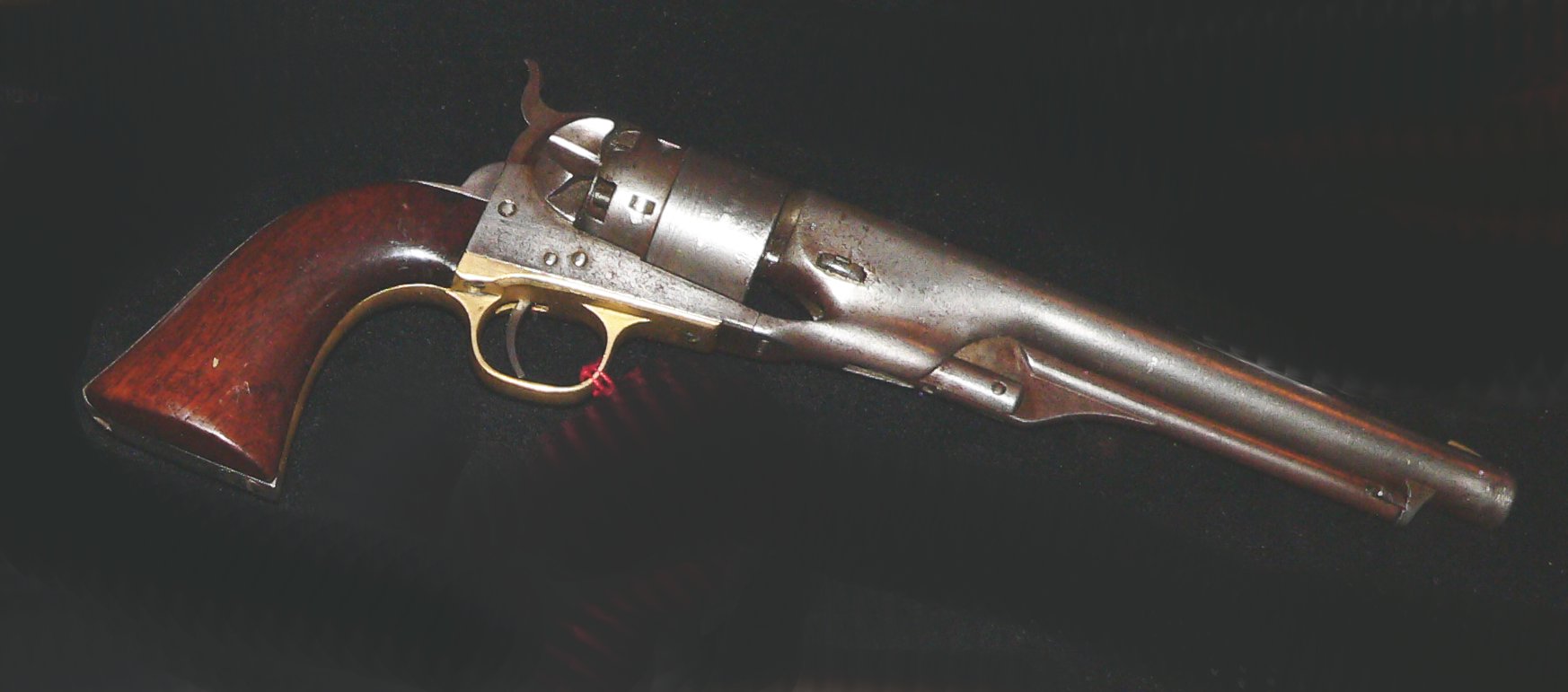
Colt Army Model 1860 (Wikimedia Commons, CC BY-SA 2.0 fr)
According to the esteemed historian of Texas, Walter Prescott Webb, Colonel Swante Magnus Swenson (1816-1896), an immigrant from Sweden to the United States, was the first person to introduce the Colt revolver to Texas. In his 1931 work, The Great Plains, Webb based this assertion on that of Ben C. Stuart, son of a newspaper owner in Galveston born in 1847 at the height of the Mexican-American War. Webb wrote: “Ben C. Stuart says that S.M. Swenson, who was a prominent merchant and later a cattleman, brought the first revolvers to Texas and called them to the attention of the president of the republic. His statement amounts to a rumor” – citing Stuart’s 1916 Texas Indian Fighters and Frontier Rangers.
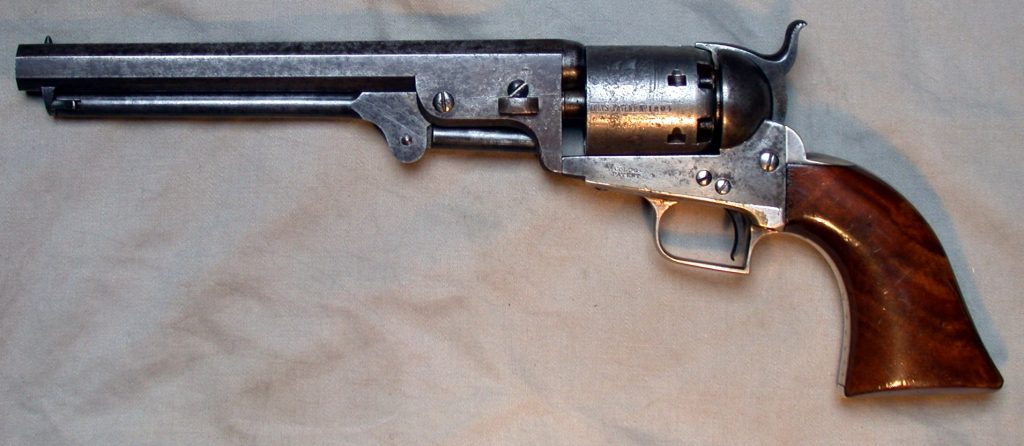
Referring to the later, more famed “Walker Colt,” designed by Texas Ranger Samuel H. Walker (1817-1847), which was used to stunning effectiveness against the warring tribes in the borderlands and in Mexico, Webb noted:
The close relationship of Texas and the Rangers to the evolution of this distinctive American weapon is exemplified in the very names given to these early revolvers. The first model, “which won its fame and fortune,” was called the “Texas.” A second model, with certain improvements over the old, was brought out probably about 1842. It was a Texas Ranger who suggested the improvements, and it was for him that the improved weapon was named. This man, Samuel H. Walker, captain of the Rangers, had been sent to New York to purchase a supply of the latest firearms, and while there he arranged to meet the inventor of the Texas.[1]
Shipwrecked on the Beach of Galveston
Historians have written much about Walker, his weapon, and his fated 1847 battlefield death in Mexico, but outside of Texas the name Swante M. Swenson, which in Swedish is written as, Svante M. Svenson, is not generally known. The second mention of Swenson in Webb’s work appeared when discussing the “Swenson Ranch (S.M.S.), one of the largest ranches in Texas.”[2]
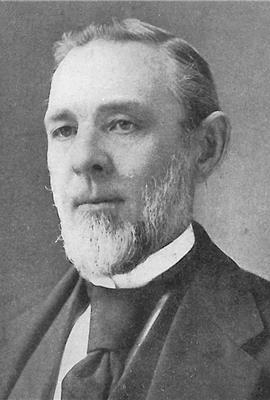
In 1916 writer August Anderson chronicled the life of the Jönköping County native, his journey as a twenty-year-old from southern Sweden to New York City via England in 1836, and his arrival in Galveston in 1838 after being shipwrecked:
When Swenson was shipwrecked on the beach of Galveston 1838, it was not much of a town. Being destitute, having lost all he had in the storm, he had to beg for his first meal. The kind landlady had not the heart to refuse him, but before the sun went down that day, Swenson had established himself as a successful business man, and could pay for his board. Going down to the beach he noticed some casks, bales and boxes of goods from the wrecked ship, and having as good right as anyone else to take possession of salvage, he set up a little primitive business, which was his first transaction, in the then young, two-year-old republic.[3]
Anderson detailed how Swenson worked his way into fortune by selling goods out of Columbus to plantation owners along the Brazos River and was recruited to become the overseer of one by its aging owner, Dr. George Long.
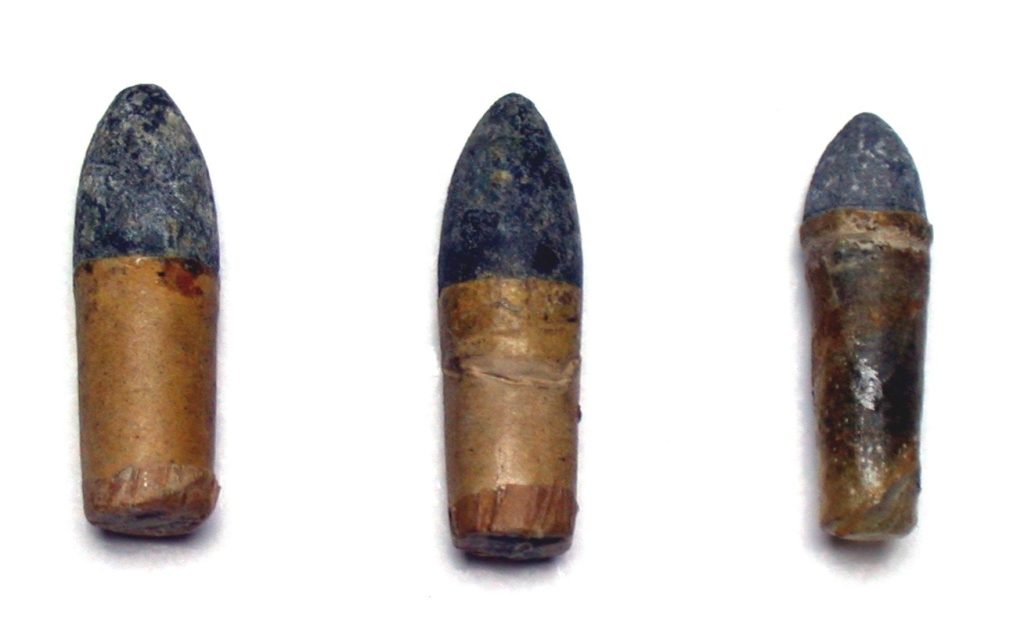
Conspicuously absent from Anderson’s glowing account of the Swede is a reference to revolvers, Colts, or any other firearm an eager reader would anticipate in a story of a man who settled in Texas in the late 1830s. Swenson may have indeed been responsible for bringing the guns to Texas because he was most likely familiar with the establishments where they were sold in the mid-1840s, such as John Ehler’s store at 171 Broadway in New York, H.E. Baldwin’s store at 7 Charter Street or Hyde & Goodrich’s in New Orleans, or Benjamin Daffia’s at 122 Baltimore Street in Baltimore. Inventor Samuel Colt’s revolvers were first patented in 1836, built in 1837, but were not the fabled models that subdued the southwest in the 1840s.
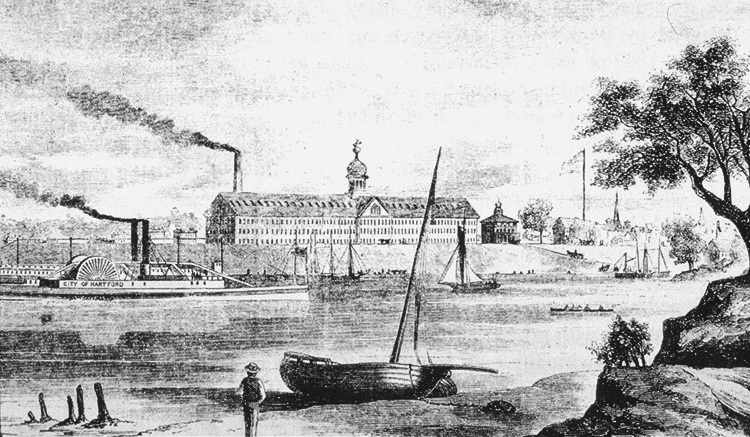
Colt’s legacy repeating revolvers “with the latest improvements of 1843 and 1844” appeared just as the Republic of Texas was annexed to the United States and war with Mexico seemingly inevitable. As Webb noted in his work, it could have been a rumor. But then again, there were a lot of rumors going around Texas in the 1840s.[4]
An Appeal for Weapons: Three Thousand Colt’s Revolvers and Appendages
On March 8, 1860, just prior to the beginning of the Civil War, Texas Governor Sam Houston sent a dispatch to the U.S. President concerning depredations along the Rio Grande claiming that the state “has not at its command sufficient troops to afford immediate protection to Texas desired, I herewith tender the services of five thousand Texas volunteers. Texas is ready for the emergency, and will act at a moment’s warning.” Along with the dispatch was an appeal for weapons:
Texas needs to repel invasion, both from the Indians and from Mexico, and an immediate supply of arms. In view of the atrocities committed on our people, I hope that the Department will send without delay by steamer or by railroad conveyances, to the care of Messrs. Perkins & Co. of New Orleans, Forbes and McKee of Port Lavaca, and S.M. Swenson of Austin, two thousand percussion rifles and appendages, one thousand Sharpe’s rifles and appendages, three thousand Colt’s revolvers and appendages, and one thousand cavalry accoutrements. Texas has always been deficient in arms, and has drawn few. Danger is upon her now, and she needs them at once.[5]
Perhaps there was a kernel of truth to the rumor after all.
[1] Walter Prescott Webb, The Great Plains (1931: Reprint: Waltham, MA: Blaisdell Publishing Co., 1941), 172.
[2] Ibid. 251.
[3] August Anderson, Hyphenated; or, The life story of S. M. Swenson (1916), 12.
[4] Anderson, Hyphenated, 22-26; “Colt’s Repeating Pistols” New York Herald, November 30, 1844.
[5] Amelia W. Williams and Eugene C. Barker, ed., The Writings of Sam Houston, 1824-1860, vol. 7 (Austin: University of Texas Press, 1942), 502. March 8, 1860. Citing: National Intelligencer, March 26, 1860; The Daily Picayune (New Orleans), March 28, 1860.
About the author
Benjamin J. Swenson is an assistant professor at Hoseo University in Asan, South Korea. He holds a PhD from Pompeu Fabra University in Barcelona, Spain, where his dissertation addressed Euro-American military history and the advent of guerrilla warfare and counterinsurgency doctrine in the nineteenth century. His work has recently appeared in the Journal of Military History, and his latest, The Dawn of Guerrilla Warfare, will be published by UK’s Pen & Sword in 2023. His hobbies include Viking sagas and chess.
One thought on “When the Colt Revolver came to Texas: The Life of Swante Magnus Swenson ”